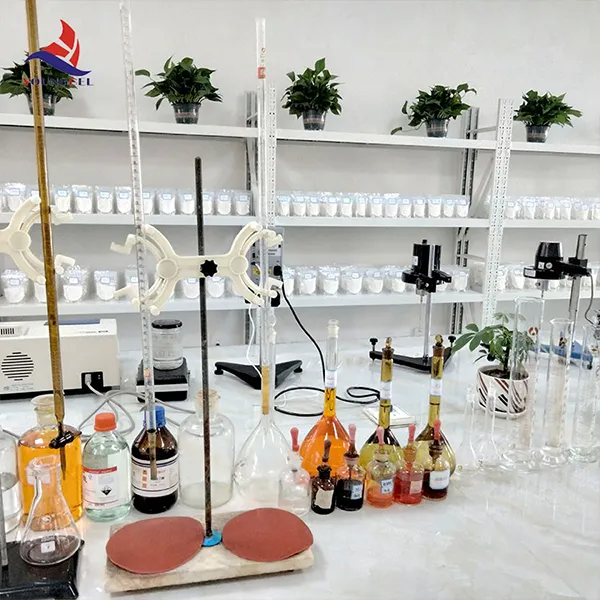The Role of HPMC in Chemical Raw Materials
Hydroxypropyl Methylcellulose, commonly known as HPMC, is a cellulose derivative that has gained substantial attention in various industries, particularly in pharmaceuticals, construction, food processing, and cosmetics. Its unique properties make it an essential component among chemical raw materials, enhancing the performance and effectiveness of many formulations and products. This article explores the significance of HPMC, its applications, and its impact on various sectors.
What is HPMC?
HPMC is synthesized from naturally occurring cellulose through a series of chemical modifications that include hydroxypropylation and methylation. This process results in a white, odorless powder that is soluble in water, forming a viscous gel when hydrated. The degree of substitution, which refers to the number of hydroxyl groups that are replaced by methoxy and hydroxypropyl groups, can vary, allowing for the customization of its properties based on specific applications.
Properties of HPMC
One of the most significant properties of HPMC is its ability to form gels and films, which can control the release of active ingredients in a formulation. This makes it an invaluable ingredient in the pharmaceutical industry, where it is commonly used as a binder, thickener, and stabilizer in tablet formulations and controlled-release systems. Additionally, due to its non-toxic and biocompatible nature, HPMC is compatible with various active pharmaceutical ingredients (APIs), ensuring safety and efficacy in medicinal products.
Other essential properties include its excellent water retention, high viscosity even at low concentrations, and stability across a range of pH levels and temperatures. These characteristics make HPMC an ideal candidate for use in various applications, ultimately globalizing its reach across different sectors.
Applications in Pharmaceuticals
chemic raw materi hpmc

In the pharmaceutical sector, HPMC serves multiple roles. As a binder in tablet formulations, it helps to hold the ingredients together, ensuring consistent dosage and stability. In controlled-release formulations, HPMC's gel-forming ability allows for the gradual release of drugs into the body, improving therapeutic outcomes and patient compliance. Moreover, HPMC is used in ophthalmic solutions to enhance viscosity and provide sustained moisture to the eyes, combating dry eye conditions.
Significance in Construction
HPMC's utility extends beyond pharmaceuticals; it has become a vital raw material in the construction industry. As an additive in cement and mortar, it improves workability, water retention, and adhesion, allowing for better application and performance of construction materials. This quality is particularly important in modern construction, where high-performance materials are sought to ensure durability and energy efficiency. HPMC-enhanced products allow for longer open times, making it easier for workers to apply and finish jobs effectively.
HPMC in Food and Cosmetics
In food processing, HPMC plays a key role as a thickening agent, emulsifier, and stabilizer, contributing to the texture and consistency of various food products. It is often found in ice creams, sauces, and dressings, ensuring improved mouthfeel and shelf-life. Its safety and regulatory approval for food use make it an attractive ingredient in the food industry.
In cosmetics, HPMC is employed as a thickener and emulsifying agent in creams, lotions, and gels, providing a luxurious texture and enhanced application experience. Its ability to retain moisture and create a smooth product feel makes it a favorite among formulators in the cosmetic industry.
Conclusion
Hydroxypropyl Methylcellulose is a versatile and valuable chemical raw material that enhances the qualities and performance of myriad products across industries. Its applications in pharmaceuticals, construction, food processing, and cosmetics showcase its importance in modern formulations. As industries continue to evolve, the demand for innovative and effective raw materials like HPMC will likely increase, solidifying its role as a cornerstone in chemical manufacturing and product development. The future of HPMC appears bright, with ongoing research and development poised to unlock even more potential applications.
-
Rdp Powder: Key Considerations for Wholesalers in the Building Materials IndustryNewsJul.08,2025
-
Key Considerations for Wholesalers: Navigating the World of Hpmc - Based ProductsNewsJul.08,2025
-
Hpmc Detergent: Key Considerations for WholesalersNewsJul.08,2025
-
Key Considerations for Wholesalers: China Hpmc For Tile Adhesive, Coating Additives, Concrete Additives, and MoreNewsJul.08,2025
-
Crucial Considerations for Wholesalers: Navigating the World of Construction MaterialsNewsJul.08,2025
-
Key Considerations for Wholesalers Sourcing Additive For Cement, Additive For Concrete, Additive For Putty from Additive Manufacturer Shijiazhuang Gaocheng District Yongfeng Cellulose Co., Ltd.NewsJul.08,2025




